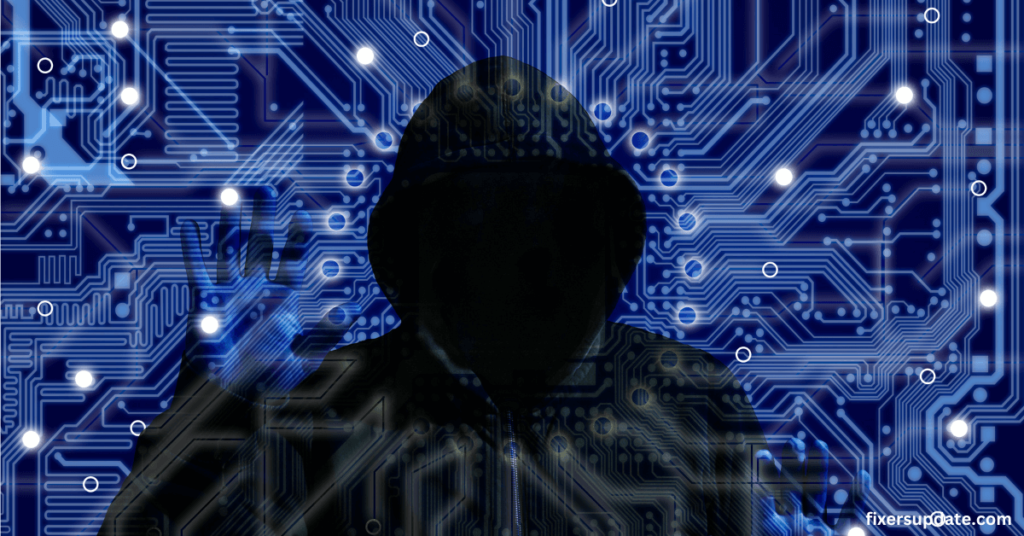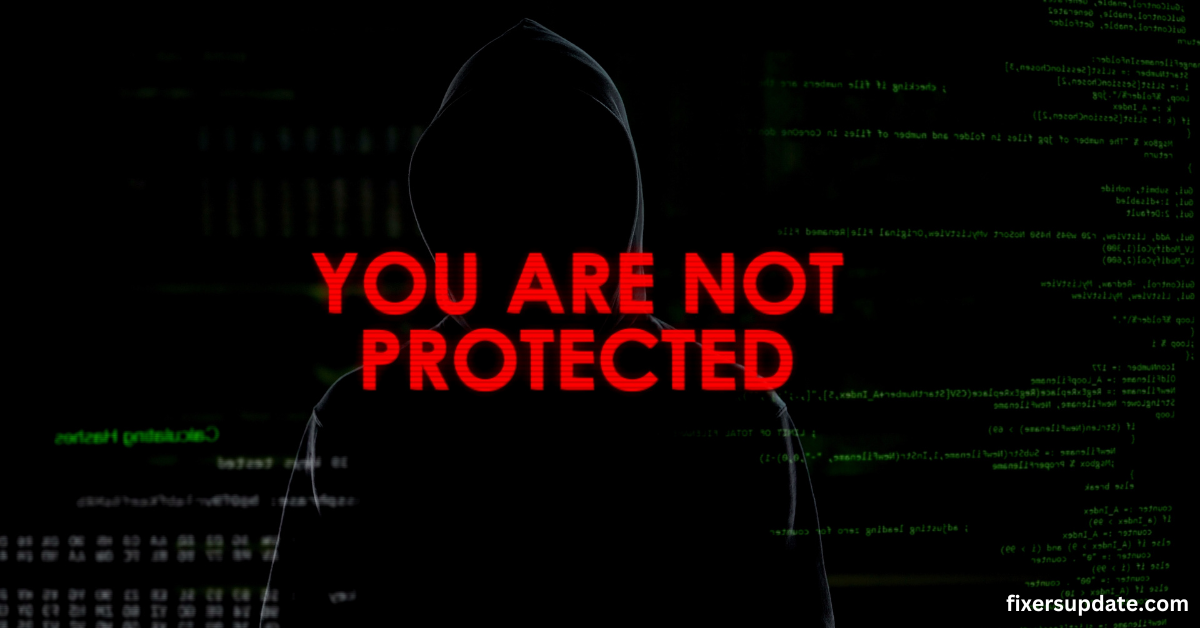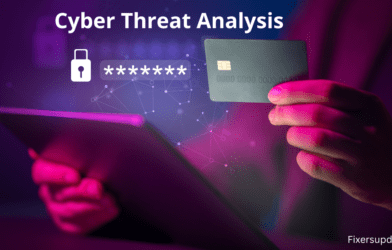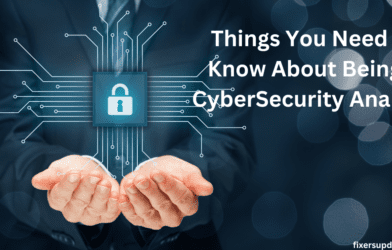In the digital universe of today, there are cybersecurity threats waiting to pounce. Be it phishing at its best or a brute- force attack, bad actors are always looking for that one smart way to break into your data and systems. Knowing why and how these cyber assaults happen is the initial step to your defense from them.
Being aware of common attack vectors and vulnerabilities means you are able to protect against them before they become vulnerable. In this article, we will look at the anatomy of different types of cyber attacks and how hackers gain illegal access. Your knowledge will give you an advantage in recognizing the risks and preparing for your online properties with strong security provided.

Types of Cyber Attacks
In the world wide landscape of digital security breaches and even governmental espionage, there are multiple ways by which a cyber attack can be carried out on your systems. The better we understand threats, the more protection strategies can be devised.
Malware Infections
There are many different types of malware, or malicious software. These could be viruses, worms, rootkits or trojans that can get into your system and harm your devices or steal your valuable data.
Ransomware
One of the worst types of malware, ransomware takes your data hostage by encrypting it and demanding that you to pay a price for its release.
Phishing Scams
- Phishing attacks are illicit attempts to obtain sensitive information by posing as a trustworthy service.
- It is usually sent by e-mail or fake websites pretending to be from an authority that you may trust.
- Avoid responding to unsolicited messages that request your personal information or prompt you to take urgent action.
Distributed Denial of Service (DDoS)
In a DDoS attack, the attacker attempts to force the target system or systems to malfunction by overwhelming it with an enormous traffic of requests. Those attacks can grind businesses to a halt, resulting in hours if not days of downtime and financial losses.
Attacks like Man-in-the-Middle (MitM) Attack
In a MitM attack, the cybercriminal eavesdrops in on communication between two parties and may even insert themselves into the conversation to alter the information being exchanged. This can be extremely harmful when the attack is on an unprotected public Wi-Fi network.
Hackers Get Inside Your Devices and Accounts
Exploiting Vulnerabilities
Hackers continuously search for cracks in your online armor. In this case they take advantage of outdated software running on your device, forgotten old systems and/or a software with security points not well configured to bypass them. Common vulnerabilities are unpatched operating systems, and applications because these typically have known security holes that hackers can easily break into.
Social Engineering and Phishing
Phishing is one of the most tactics used by hackers, period. They use deceptive emails, fake websites, or texts to get you to share valuable personal information — such as your account numbers, Social Security Numbers, or login IDs and passwords. Social engineering exploits trust and curiosity of how people work to entice them into potentially compromising technology.
Weak Password Practices
Half of all passwords are too weak That % will be even lower Many users still overlook the usefulness of strong, unique passwords Blackhat hackers have powerful tools to breach inadequate passwords, which they do brute force attacks or use as dictionary-based method. When passwords are multipurpose, then if one breaks it can open the door for many others to fall.
Malware and Trojans
Through infected downloads, compromised website links or sometimes legitimate-looking software updates, malicious software (eg: viruses, worms and trojans), could gain access to your devices. While the programs are often installed discreetly by hackers, when active it can give them remote access, they can steal personal and sensitive data or infect other connected devices.

Best practices for online self-defense
Anyhow, the protection of your online profile is paramount in today’s digital environment. Using these tips and more through apps like protected browsing, you can be sure to avoid these cyber attacks.
Use Strong, Unique Passwords
Utilize complex passwords for all of your online accounts, ideally one that is a combination of uppercase and lowercase letters, numbers, and symbols. You may want to generate them and save them in a good password manager.
Turn on Two Factor Authentication (2FA)
Use 2FA wherever possible In addition to your password, this extra layer of security requires a second verification (a code you receive on your mobile device).
Keep Software Updated
Keep Your System/ Applications/ Antivirus Updated, Period! Such updates frequently contain necessary security patches that defend against newly-exposed vulnerabilities.
Be Wary of Phishing Attempts
Be suspicious about opening emails, clicking links or downloading attachments from anonymous persons. Double check the sender and if it looks like phishing, keep an eye out for misspellings or hurry over personal information.
Enable a VPN (Virtual Private Network)
Use a VPN to encrypt your internet connection when you connect to public Wi-Fi networks, so that nobody can listen in on your data.
Creating Strong Passwords
Your password is your first layer of security against cyber threats in the world we live in today since it is a digital environment. Building strong passwords is a cornerstone of securing your digital information (both personal or professional) from unwanted eyes.
Complexity is Key
Password best practices for the powershell script(s) Include upper case, lower case letters, numbers and special characters Never use information that could be easily guessed such as birthdays or common words. Use a passphrase instead—a series of random words that you can remember but no one else could guess.
Length Matters
A human 60-character password is going to be more secure by its nature than a 30- or a 20-characters one. I suggest a minimum of 12 characters but the longer the better. The more characters you add, the time it takes a hacker to bypass your account grows exponentially.
Separate Passwords For Different Profiles
It is like having one key that unlocks all of your locks. Compromising one of these accounts means compromising them all. On your online accounts, particularly email and financial ones, use unique passwords
Leverage Password Managers
It is hard to have a collection of complex passwords. We recommend using a good password manager to generate and store strong, unique passwords for all of your accounts safely. It can vastly improve your security and make your online life much easier.
What happens now that a cyber attack has occurred
Immediate Actions
Act quicklyIn case of a cyber attack, time is your worst enemy. Disconnect devices vulnerable from the network right as you spot them to prevent further propagation.
Let your IT department or cybersecurity team know as soon as possible and inform them of all the details surrounding the incident. If you have no in-house team, get hold of a solid cybersecurity company to help you out quickly
Assessing the Damage
After containing the immediate threat, assess the damage. Are Carrying Out the Analysis on Breached Systems, Which Were Affected and The Data That Could Have Been Accessed/Stolen or the possible Impact for Your Enterprise.
The assessment will assist in directing where you should focus your recovery work, and if there are any additional legal or regulatory requirements that must be adhered to.
Recovery and Prevention
Once you have healed and evaluated, work on getting healthy and fortifying your defenses. restore each of those systems from a known clean backup, force-reset every password pertaining to the attacked services and close any holes/exploits that allowed the attack in.
If anything, leverage more security settings like two-factor authentication, stricter tools that monitor your digital environment, and do a series of training programs to educate your workforce so they know not to click suspicious mails.
Always keep in mind that a cyber attack is an equal part of a threat and opportunity to you — it does give you the best chance to improve your existing cybersecurity measures!
Free ebook
- Simplifying Security for Businesses Learn the IT securty web developers need to address top threats and how it is different from an overall computer security course.
- Cyber Security Threats are becoming prevalent every second with the evolution of digital platform leaving an unbearable risk on individuals as well as organizations.
- These threats can vary considerably, each with distinct traits that could have different repercussions.
Common Types of Cyber Attacks
Cyber attacks impersonate various forms of malware infections to highly sophisticated social engineering schemes. Malware, such as viruses, trojans and ransomware can access systems destroy the integrity of data. In reality, phishing is an example of human exploitation — i.e., social engineering attacks where humans have been tricked into compromising sensitive information.
Cyberattacks and Weaknesses
As such, unauthorized access is usually achieved by exploiting vulnerabilities in software, network and/or human behavior. Organisations who are still lazy with patching, use weak passwords or have unsecured wifi networks will be prime targets. More advanced social engineering techniques such as pretexting or baiting involve psychologically manipulating victims into providing access or sensitive information.
Impact of Cyber Attacks
Successful cyber attacks have severe consequences and can wreak havoc. You can face financial losses, reputational damage, and operational disruptions. In extreme cases, a data breach can result in identity theft, loss of intellectual property and even [compromise] national security. Knowing about these threats is important because it helps in setting up a proactive defense for securing digital assets.
How do you guard yourself from Cyber Security Threats?
To stay safe from online threats, use strong passwords and change them regularly. Turn on extra security like two-factor authentication. Be careful with links and files you click on, and always keep your apps and software up to date. Don’t share personal info on websites that don’t look safe.
Use Strong, Unique Passwords
Establishing robust, fresh passwords for every internet account of yours is the front-line solution. Use a mix of capital and lower-case letters, numbers, and symbols. Use a password manager to protect and maintain your passwords.
This might seem simple but is one of the most important things you can do, enable Multi-factor Authentication (MFA).
Multi-factor authentication
this makes sure that even knowing one password is not enough to access the account as one has to be able to verify your identity with something else like a code sent in a text message or biometric scan. With two-step authentication, even if your passwords are hacked no can access your account without the real-time authentication code.
Be Cautious of Phishing Scams
- Never provide personal information in an email or message without confirming the validity of that request.
- Check for phishing indicators, such as unusual email addresses, too urgent requests or strange attachments.
- If you are unsure, reach out to the company or person through another method of communication to confirm anytime an e-mail that seems too good (or bad) to be true.
Keep Your Software Updated
Hackers exploit security vulnerabilities present in the old software. Update all operating systems, apps and antiviruses as new threats emerge consistently.
Backup Your Data Regularly
Make backup of your data at an external hard disk or some secure cloud storage. If you can recover the data without paying ransom in case of a ransomware attack or system failure, then you have backups.

Cybersecurity Awareness
- Cybersecurity can be prevented by creating awareness about the dangers associated with it.
- Learn and make your family aware of cyber threats Be updated profiling all the trends and buzz within the cybersecurity to decide how to react against them.
The Cyber Security Risks
- In the digital universe of today, there are cyber threats waiting to pounce.
- Be it phishing at its best or a brute- force attack, bad actors are always looking for that one smart way to break into your data and systems.
- Knowing why and how these cyber assaults happen is the initial step to your defense from them.
- Being aware of common attack vectors and vulnerabilities means you are able to protect against them before they become vulnerable.
- In this article, we will look at the anatomy of different types of cyber attacks and how hackers gain illegal access.
- Your knowledge will give you an advantage in recognizing the risks and preparing for your online properties with strong security provided.
pros and cons
| Pros | Cons |
|---|---|
| Comprehensive Coverage: Provides a thorough guide to understanding and protecting against various cybersecurity threats. | Overwhelming for Beginners: The depth of information might be too complex for those new to cybersecurity. |
| Actionable Steps: Includes practical advice that readers can apply immediately to protect themselves online. | Lack of Personalization: The guide may not address specific needs or concerns of individual users. |
| Wide Range of Threats: Covers multiple types of cyber threats, offering a well-rounded approach. | No Focus on Emerging Threats: May not address newer or evolving cybersecurity threats, such as AI-driven attacks. |
| Educational Value: Helps readers learn about cybersecurity threats and the importance of online safety. | Potentially Dated Information: Cybersecurity practices can evolve rapidly, making some advice obsolete. |
| Promotes Awareness: Raises awareness about the importance of digital safety for individuals and businesses. | Technical Jargon: Some terms may be too technical or advanced for non-experts to fully understand. |
Conclusion
- Cyber threats are constantly evolving, so it’s more important than ever to be vigilant about protecting yourself online.
- Knowing how attacks happen and practicing strong security measures will help you keep your risk very low.
- Complex Passwords + 2FA + Software Updates + Attention to email/links.
- Be updated regarding new threats and security measures.
- No system is 100% theft-proof, but using a preventative cyber approach will greatly assist in protecting your personal identification and digital real estate.
- In the end it is your vigilance and caution that will protect you against these cyber malefactors.
- Embed cybersecurity into your everyday digital life.
Most Frequent Asked Questions
How do you protect yourself from cybersecurity threats?
Strengthen your passwords, enable Multi-Factor Authentication (MFA), and stay up-to-date with any current software patches. This is why regular data backups and email caution to prevent phishing attacks ensures protection against online threats.
How do you defend against cybersecurity threats?
Protect yourself using your antivirus, put up firewalls and avoid unsafe browsing. Ensure that the websites to which you surf are legitimate and do not click on suspicious links or download unsafe attachments.
How will you keep yourself safe from cyber theft?
Keep your sensitive data encrypted to avoid cyber theft, check transaction details regularly and do not provide personal info over unsecured channels. And use a VPN in public networks.
What are the solutions for cybersecurity threats?
Some of the best solutions that you can implement would be using security software, updating system and multi-factor authentication. The best way to protect against these attacks is to educate yourself and your team about how to spot them which allows for building a solid platform, e.g. having firewalls in place.











